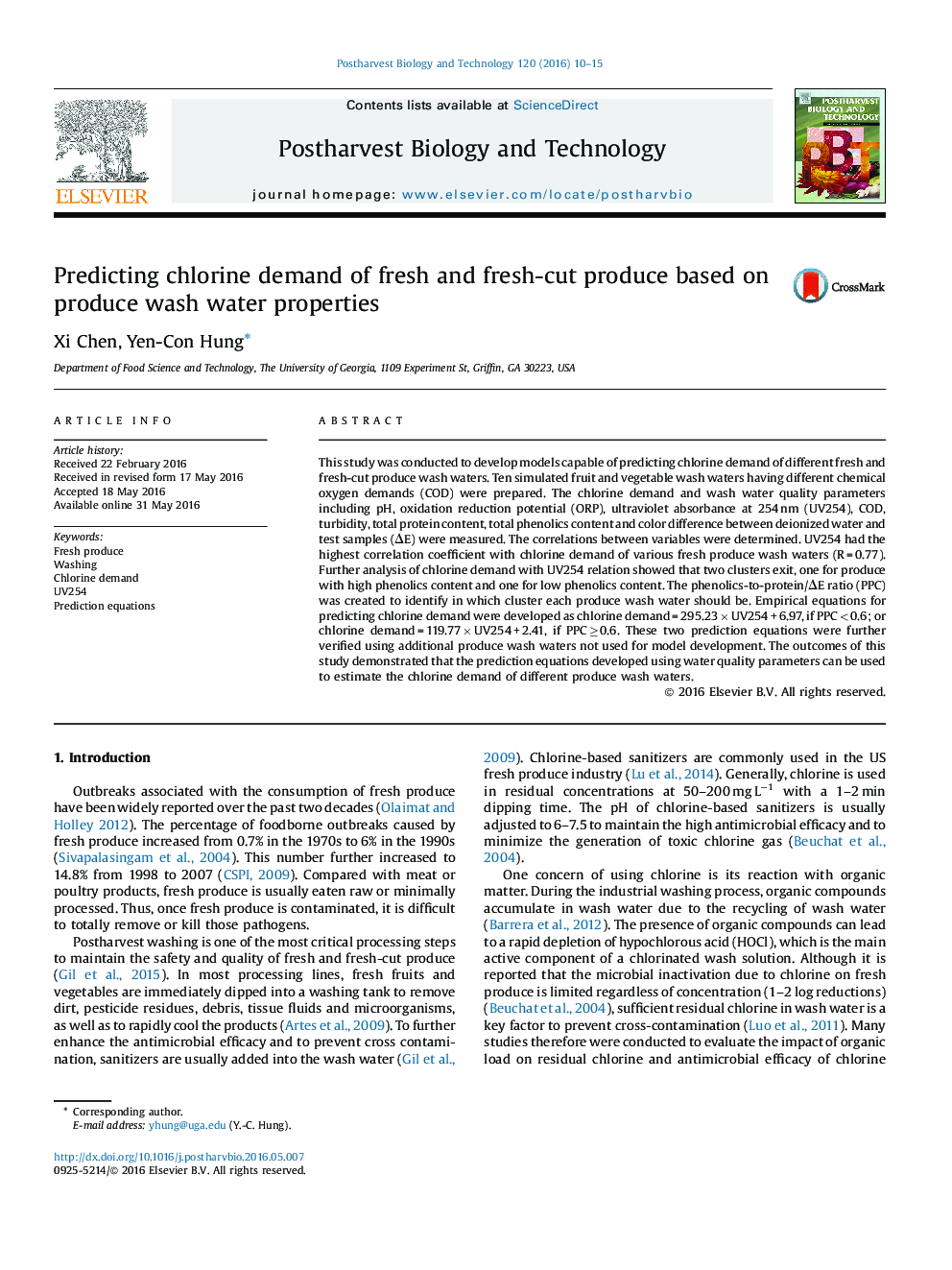| Article ID | Journal | Published Year | Pages | File Type |
|---|---|---|---|---|
| 4517721 | Postharvest Biology and Technology | 2016 | 6 Pages |
•The UV254 had the highest correlation with chlorine demand of produce wash water.•Produce can be divided into two clusters based on their reactivity with NaOCl.•Equations to predict chlorine demand of various produce wash water were developed.
This study was conducted to develop models capable of predicting chlorine demand of different fresh and fresh-cut produce wash waters. Ten simulated fruit and vegetable wash waters having different chemical oxygen demands (COD) were prepared. The chlorine demand and wash water quality parameters including pH, oxidation reduction potential (ORP), ultraviolet absorbance at 254 nm (UV254), COD, turbidity, total protein content, total phenolics content and color difference between deionized water and test samples (ΔE) were measured. The correlations between variables were determined. UV254 had the highest correlation coefficient with chlorine demand of various fresh produce wash waters (R = 0.77). Further analysis of chlorine demand with UV254 relation showed that two clusters exit, one for produce with high phenolics content and one for low phenolics content. The phenolics-to-protein/ΔE ratio (PPC) was created to identify in which cluster each produce wash water should be. Empirical equations for predicting chlorine demand were developed as chlorine demand = 295.23 × UV254 + 6.97, if PPC < 0.6; or chlorine demand = 119.77 × UV254 + 2.41, if PPC ≥ 0.6. These two prediction equations were further verified using additional produce wash waters not used for model development. The outcomes of this study demonstrated that the prediction equations developed using water quality parameters can be used to estimate the chlorine demand of different produce wash waters.
